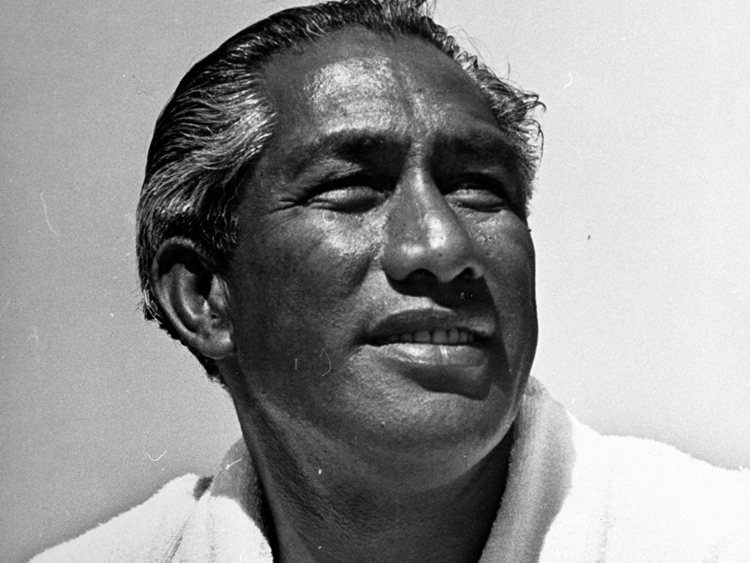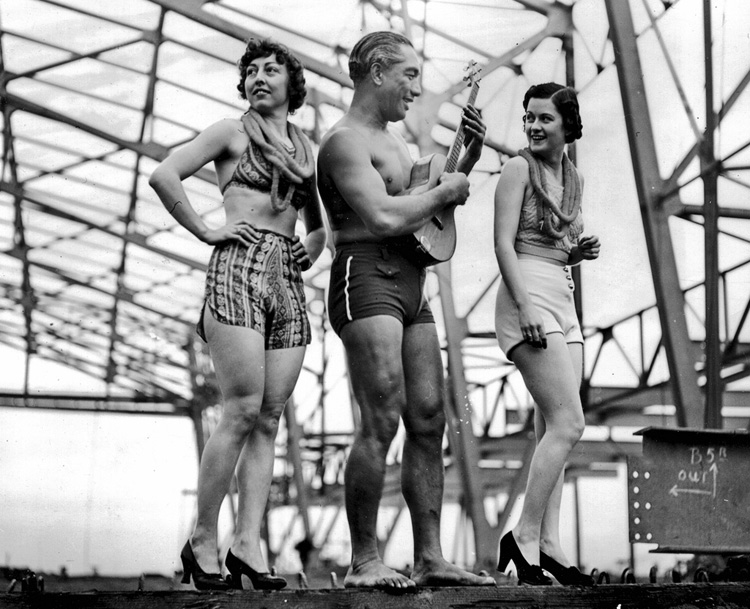Hawaiian legend and "father of surfing" Duke Kahanamoku would've been 125 years old on August 24, 2015.
If you've ever been in any doubt about the cultural relevance of surfing, well, wonder no more.
Celebration of the life of a humble islander, who shared his small-time passion with the world nearly one hundred years ago, by a modern-day information leviathan is undeniable proof that the lessons learned in surfing are of social significance across borders, both political and principle.
The best thing about The Duke was that he didn't have to go out and preach about his ethos; he simply lived it.
We can learn a lot from Kahanamoku.
Get out there: Kahanamoku was a big champion for the then-budding sport of surfing.
He shared his passion everywhere he went and became known as the Ambassador of Aloha after teaching folks to surf in California, New Zealand, and Australia.
Broaden Your Horizons
You know him as a surfing icon, but Kahanamoku was a man of many talents, and it was his success as an Olympic swimmer that allowed him to travel the world.
He won five medals in his professional swimming career but wasn't content to share only one side of himself.
As his athletic profile grew, he began to introduce surfing to the list of things he was known for. The world watched in awe.
Look Out For Others
On June 14, 1925, Kahanamoku was on the beach in Newport Beach, CA, when a fishing boat capsized offshore in rough seas.
Duke used his surfboard to rescue eight men, making several trips back and forth to the shore as quickly as he could.
His effort was called "the most superhuman surfboard rescue act the world has ever seen" by the area police chief.
Duke spent time out of the water, too, and was elected sheriff of Honolulu 13 times.

Stay True to Yourself
Growing up in Waikiki, the young Duke spent his time improving his swimming and surfing skills.
As his celebrity grew, and despite advancements in surfboard design as a result of newfound, widespread interest, Duke maintained a preference for the old-style Hawaiian "olo" boards he had learned to ride as a youngster.
Do What Scares You
Duke arguably would not be the legendary character he is today without that one epic ride.
In 1917, at a break in Steamer Lane called Castles, Kahanamoku caught a wave that would go down in history.
Reported by some at around 30 feet in height, the behemoth wave carried Duke over a mile to Publics on a 16-foot redwood board without fins.
He didn't stop at Publics, either; Duke carried on surfing separate breaks as far as the far side of Canoes.
Have Fun With Success
Kahanamoku understood the value of not taking things too seriously.
As a rising celebrity athlete, he appeared in over a dozen films, often as himself and sometimes as island chiefs or pirates.
See the Big Picture
Duke's profile was so influential that he is often credited for helping bring an understanding of Hawaiian culture to the world and to the winning of U.S. statehood in 1950.
Keep On Growing
"He was the highest example of being an ocean man," Fred Hemmings, a world-class surfer and friend of Kahanamoku, once said, "He was the world's fastest swimmer, the world's best surfer, one of the world's best canoe steersman."
Learn more about Duke Kahanamoku's life. Take a look at Big Kahuna's famous quotes.
